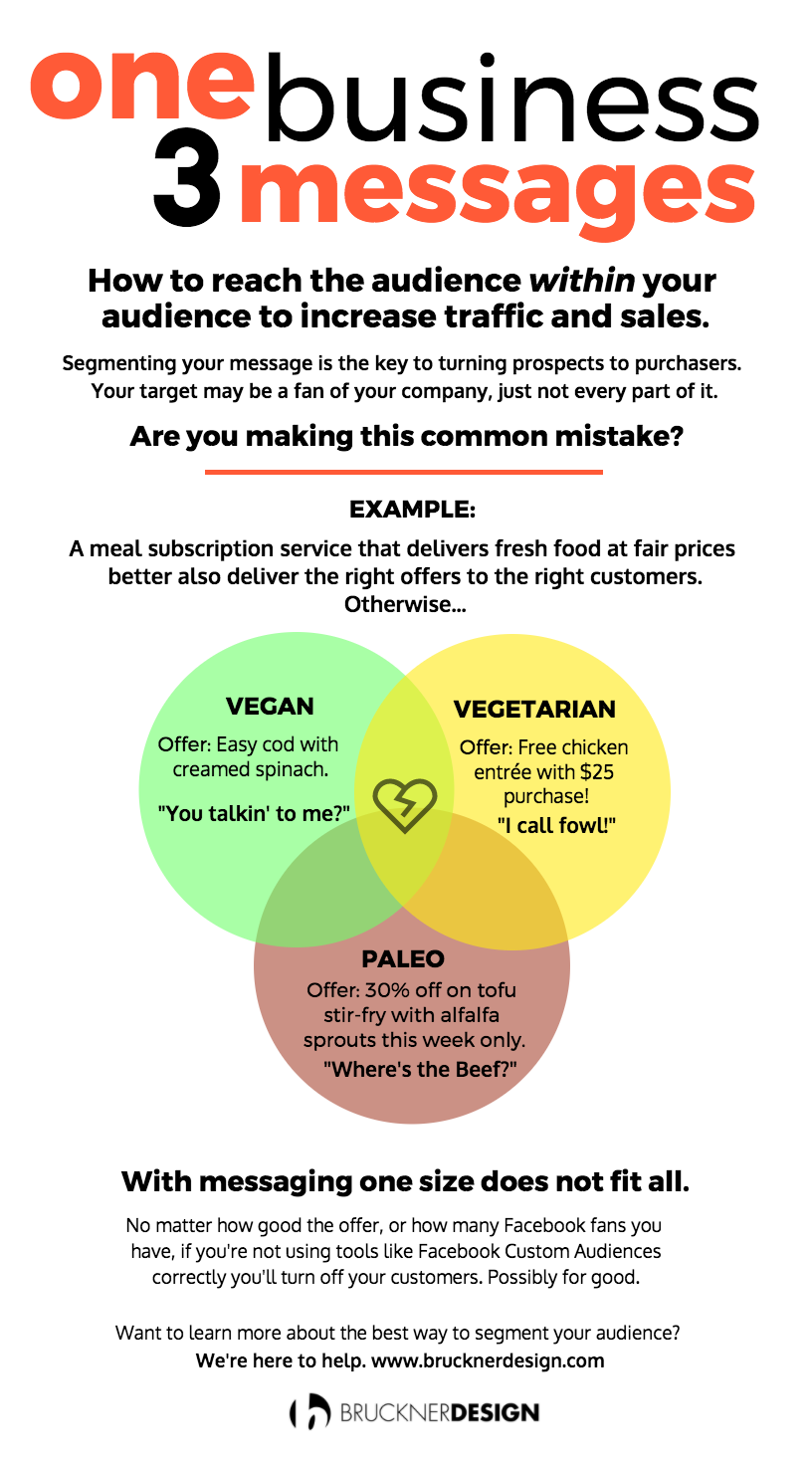The Fastest Way to Improve Your Retargeting Advertising Results: Customer Segmentation
Why segmenting your audience will reach more customers

Want to get better results from your retargeting ads? Here are a few examples of how to use a customer segmentation strategy with behavioral targeting to boost conversions by 200%. (with customer segmentation examples using Facebook retargeting.)
July 21, 2017 by Taylor
So you want to get better results from your retargeting ads, eh?
By now, most of us have heard about retargeting advertising and probably even dipped our toe in the water.If you’re not familiar with what retargeting is and how it works, click here.
How can you fine-tune your retargeting strategy to supercharge your follow-up and really move the needle in your business.
Answer: By segmenting your website visitors.
Segmenting is essentially grouping your visitors according to their behavior on your site.
There are two main ways you can segment your visitors:
1. By their position or where they are in the sales cycle.
2. By their interest, or the type of content they looked at on your site.
If someone comes to your e-commerce site and places a pair of shoes in their shopping cart but doesn’t actually finish buying them, should they see the same ad as someone who has only ever visited your home page?
Of course not. You would probably want to show the first person an ad that reminds them to complete their purchase and maybe even gives incentives for them to do so. The second visitor might see a more “get acquainted” type of engagement ad.
You can also use list-based retargeting to segment customers by their position in the sales cycle.
List-based retargeting works after you already have captured someone’s contact information in your database. You can then upload these email addresses into Facebook Custom Audiences or Google and create highly personalized ads depending on where exactly these people are in your sales cycle.
To illustrate the second segmenting strategy, let’s pretend you’re in the meal subscription business. Your specialty is fresh food at fair prices but you appeal to a wide audience. Your website is brimming with content about the different types of recipes for Paleo, vegetarian and vegan customers.
Chances are that the website visitors who are reading vegan recipes will not be interested in a retargeting ad that speaks to them about an “easy cod with creamed spinach Paleo dish.” A Paleo content consumer will likewise be less than thrilled at a ” 30% off on a tofu stir-fry with alfalfa sprouts this week only” promotion.

In both types of segmenting, you are letting the visitors’ behavior dictate which message he or she sees. This ensures that your ads will be more personalized and relevant, which in turn will lead to higher click through rates and an increase in conversions and ultimately in more sales.
Recently, Appboy analyzed the data of over 30,000 campaigns, sent over two years and determined that a well thought-out customer segmentation strategy ( versus non-targeted messaging ) can result in a 200% increase in conversions.
Conclusion
By using a retargeting strategy that includes segmentation, you can automatically follow-up with your website visitors with messaging that speaks directly to what interested them most about your product or service. This gives your advertising a fighting chance in today’s competitive online environment.Ready to get started building an audience of your website visitors that you can retarget? Click here.
What do you think? Have you tried segmenting your website visitors before?
LET US KNOW |
